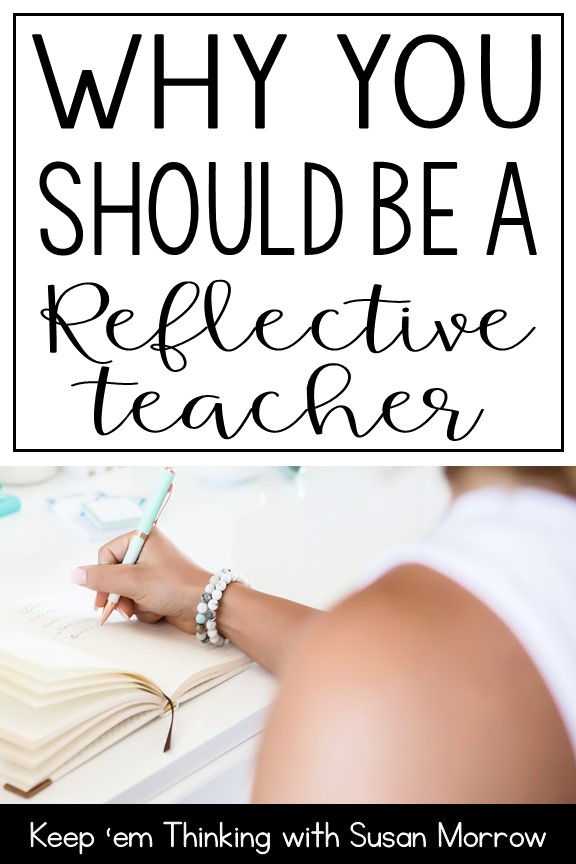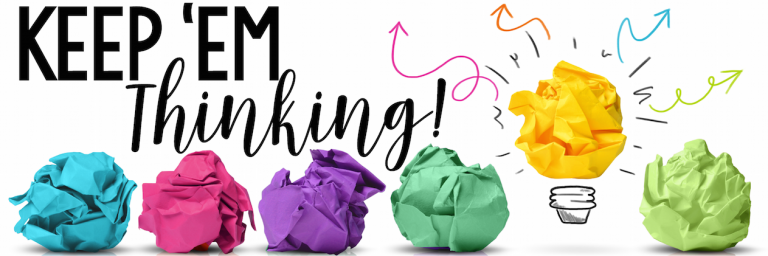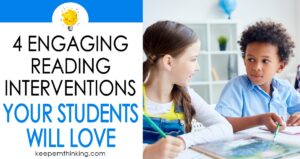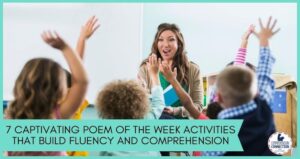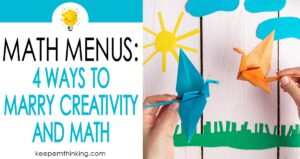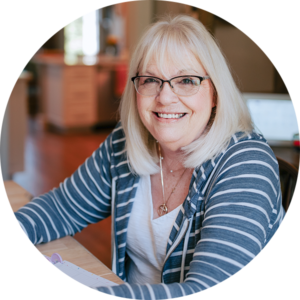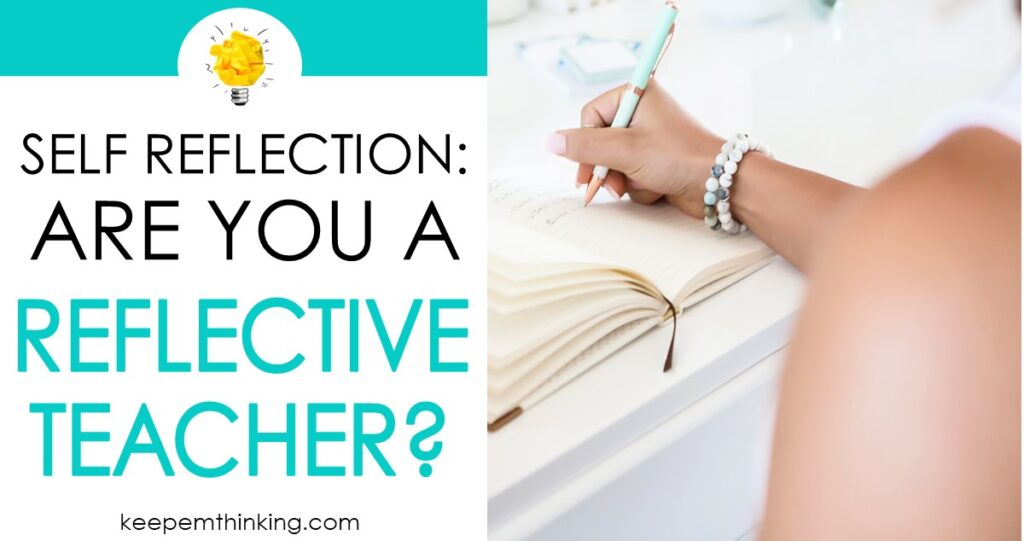
Self-reflection is one of the most powerful practices to improve teaching. When you practice self-reflection regularly, it will completely transform your classroom and instruction. Furthermore, self-reflection can take you from being a good teacher to being a great teacher. Are you ready to begin the transformation?

The old me – pre self-reflection days
In my early teaching days, I rushed through each day, trying to get everything done. At the end of the day, I left my classroom behind, went home, and began my other job of being a single mom. I was happy when everything in my class went great, but I sometimes blamed it on the kids if everything didn’t go just as I planned. Purposeful self-reflection was the last thing I had time for or wanted to do for that matter. Boy was I wrong!
What changed things?
In 2002, I decided to go through the National Board Certification Process. During the NBCT certification process, you submit examples of your lessons through videos and student products. You must also include detailed descriptions and self-reflections of your lessons. And, in those reflections, you cite examples of what worked, what didn’t, and give ways to improve the lesson.
This blog post IS NOT about National Board Certification. Furthermore, I am not advocating you go through the National Board Certification process. But, I am proposing you adopt using self-reflection to improve you teaching. Try to find time at the end of the day, unit, or week to reflect on your teaching. Those self-reflections are powerful, painful, humbling, validating, and a thousand other emotions jumbled together. But most importantly, you will learn a lot about yourself and your students!

Self-reflection tips to remember
1. There is no such thing as a perfect teacher or a perfect lesson
Perfect it one word we need to throw out the door! While reflecting on your teaching, you can easily become overly critical of yourself. I have never taught a perfect lesson – sometimes I didn’t wait long enough after asking a question, or I didn’t ask enough high level thinking questions, etc. To this day, I have never reflected on a lesson that I couldn’t find ways to improve. And that is GOOD! Remember, If everything is perfect there is no growth.
2. Use a list of self-reflection questions
When reflecting, I suggest using a list of questions. I have a list of questions I use to reflect on my lessons which you can download and use. You can just read them and think about them, write your self-reflections in a journal, turn them into a checklist, etc. These questions were useful to me and I hope you might find them useful as well.
For me, a great time to reflect on my day was while driving home in my car. But, if you live where there is tons of traffic, maybe this isn’t such a good idea. Also, I love to take long baths at the end of the day. It is very relaxing, and a great time for reflection.
Initially, I suggest picking one or two areas to focus on and go from there. If you try to pick too many areas, you will become overwhelmed. Also, you don’t want to spend all night reflecting on your lesson!

Classroom culture/classroom community questions
- Were the students willing to take risks/ try something new?
- Do you feel the students felt comfortable asking questions?
- Did the students listen to the opinions/thoughts/ideas of others?
- Were the students the center of the classroom discussions?
- Did students follow the classroom rules?
- Do the students interact well with each other?
- Did students follow the classroom rules?
- Were the students comfortable letting me know they didn’t understand something?
- Did I give students equal attention during the lesson?
- Was I happy teaching this lesson?
- Did I have a positive demeanor during the lesson?
- How do I think I handled any classroom disruptions or student behavior issues?
- Did the students work well with each other in their groups? Are there any changes I need to make with grouping?
Planning and Preparation Questions
- What were my goals for this lesson – what did I want the students to know, understand, and be able to do as a result of this lesson?
- Why did I plan this learning experience as a way to achieve my goals?
- Was I prepared for today’s lesson – did I have all my materials prepared and organized?
Self-reflection Questions About Instruction
- What went well in the lesson?
- To what extent were my students engaged in the lesson?
- Did the students appear interested in and/or excited about the lesson?
- What did I do to engage the students or get them excited at the beginning of the lesson?
- Did I modify my lesson based on the needs of the students?
- If I had to teach this lesson again, what would I do differently?
- Did the students accomplish my goals for the lesson? If, not, what are my next steps:
- What was the most challenging part of this lesson?
- Who did most of the talking? The students or me?
- Do I feel there were any missed opportunities in this lesson where I could have gone into more depth or expanded the lesson in some way?
- Did any students struggle with this lesson? What are some strategies/activities I can use that might help them master the content and/or skills in the lesson?
- Were accommodations provided for both high achievers and struggling students?
- Did the students accomplish my goals for the lesson? If, not, what are my next steps:
- What method(s) of assessment did I use to determine the success/understanding/progress of my students during this lesson?
- Were there opportunities for whole group, small group, and individual work?
3. Recognizing areas you need to improve is the first big step
Everyone finds different areas they need to focus on improving. Recognizing those areas is the first big step. Now that you are aware, you know areas you need to improve. For example, you might decide you need to differentiate more to meet the needs of all your students. Or, you need to provide more opportunities for formative assessment during your lessons. Finally, you may think you need to increase wait time when asking questions.
4. Video is powerful for SELF-REFLECTION

First and foremost, the information you get from watching yourself on video is the most valuable information you can get. Of course, I think everyone hates watching themselves on video. But, watching a video of your teaching is very revealing. For example, you are able to view your class as a spectator rather than as the presenter of the lesson. There are so many things a video tells you that you will never notice yourself. When I watched my video, I realized that I didn’t give enough wait time after I asked a question. Also, I noticed I needed to ask more high level questions. Through video, I could see that when a student gave an answer, I needed to ask more probing questions such as Why do you think that? , What else can you tell me? , or How does that relate to something else we have studied?
First of all, I suggest asking a friend or colleague to video you. If that’s impossible, set up your phone or camera in the room and just let it run. The first time you video your lesson, your students may not act normally. However, once they are used to being recorded regularly, they will act more normal.
Remember, some school systems require permission to video your class. For this reason, it is important to let parents know how and why you are videotaping the class. In my experience, parents usually consent if they know the videos will not be shared and are for your own professional development.
Suggestions For Watching Your Video

In the beginning, you might tend to focus more on yourself than the students and instruction when reviewing your video. I know I did. I said things like: I didn’t know my voice sounded like that! My hair looks terrible! I don’t like that outfit. It makes me look fat. First and foremost, this video is not about your looks or your voice! Get over it! You want to learn about your teaching, not your voice and appearance. With that in mind, here are a few suggestions for watching your video.
- Turn the sound off the first time you watch the video. Silence enables you to focus on the students and watch their faces and body language. Ask yourself, are they interested in the lesson or turned off? Do they interact with their classmates? Are they on task or goofing off? Remember, if you watch with the sound on, you might miss some of this valuable information. Of course, you should turn the sound on for subsequent viewings.
- Watch with a purpose in mind. You might want to focus on how you introduced the lesson, student engagement, questioning strategies you used, use of wait time, how you called on students or how students worked in groups, etc. Remember, if you try to focus on every little thing you will become overwhelmed.
- Take notes of things you notice. First, put a checkmark on things you think are important or significant. Next, note if they a positive or negative. Above all, don’t just focus on things you think didn’t go well. Take note of what worked and what made you feel good about the lesson. First and foremost, reflection is not just about recognizing areas to improve. Reflection also validates what you are doing right!
5. Make a plan

Last, but not least, you need a plan. It is helpful to reflect and identify areas you do well and those that need improvement. However, awareness is usually not powerful enough to evoke change. Most importantly, you must have a plan. You may have identified a number of areas you feel need improvement, but you don’t want to try to change everything at once. Pick one or two areas you feel you wish to improve and create a plan.
Next, decide what action steps you will take to meet your goal. This might include attending a professional development session, reading books, specific strategies you will use, etc.
Finally, decide how you will measure your improvement. Depending on the goal, you will have different data to demonstrate improvement. Will you record yourself? Will you have a friend observe you? Will you use anecdotal notes? Will you keep a journal? Will you use assessment scores?
Bottom Line
To sum it up, and with no reservations, I can say purposeful self-reflection is the greatest practice to improve your teaching. Self-reflection can be both painful and rewarding at the same time. Remember, don’t just focus on the areas you need to improve. Pay attention to the things you do well. It is easy to get down on yourself when you are reflecting on your teaching. But you need to realize and accept there’s no perfect teacher and no perfect lesson. The greatest athletes, authors, and professionals are constantly reflecting on their practice and working to improve and hone their skills. You’ve got this!

Pin for Later
